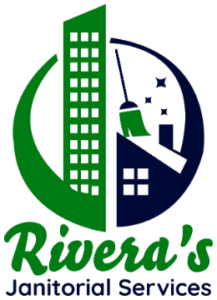It’s no secret that a clean warehouse can improve operational efficiency. In the bustling industrial landscape of Simi Valley, spotless facilities are essential. Ensuring cleanliness goes beyond appearances; it enhances productivity and safeguards worker safety. Dust control, OSHA compliance, and effective floor scrubbing are foundational. In this article, we explore warehouse cleaning best practices every facility manager should know. Learn how targeted cleaning strategies keep forklift lanes clear and workplaces compliant. Implementing these methods helps your business thrive while maintaining efficiency.
Importance of Industrial/Warehouse Cleaning in Simi Valley
Maintaining a pristine warehouse in Simi Valley is critical. The region’s dry climate intensifies dust challenges, increasing airborne particulates on equipment and inventory. When dust accumulates, product quality declines, and worker health is at risk. By following warehouse cleaning best practices, managers can enhance air quality and reduce hazards. Clean floors and clear forklift lanes also minimize accidents and equipment damage. A spotless warehouse improves efficiency, reduces downtime, and supports brand credibility. Clients and auditors notice the difference when aisles and workstations are well maintained.
Dust Control Measures for Warehouse Cleaning
- Use industrial-grade sweepers with HEPA filters to capture fine particles.
- Install air scrubbers in high-traffic areas for consistent air quality.
- Replace HVAC filters regularly to minimize airborne contaminants.
These steps reduce reactive deep cleaning and sustain a hygienic atmosphere. Targeted approaches protect staff, inventory, and equipment from dust-related issues.
OSHA Compliance Guidelines for Warehouse Cleaning
- Conduct audits to verify OSHA adherence and identify risks.
- Document cleaning processes and maintain transparent records.
- Train staff consistently on hazard communication and safe procedures.
Integrating OSHA compliance into cleaning routines shows commitment to safety and employee wellbeing. Following warehouse cleaning best practices ensures both legal compliance and healthier workplaces.
Floor Scrubbing Techniques for Effective Cleaning
Floor scrubbing plays a central role in warehouse upkeep. Automated scrubbers with variable settings remove grime and grease effectively. Rotary and cylindrical brushes dislodge debris from heavily soiled areas faster than manual tools. Consistent scrubbing improves slip resistance and creates a safe, professional environment for staff and visitors.
Use of Eco-Friendly Cleaning Products in Warehouses
Eco-friendly products align operations with sustainability. Plant-based solvents and biodegradable detergents lower exposure to toxic chemicals. Always verify certifications before introducing green agents to your facility. Responsible product choices safeguard workers and reduce environmental impact, which also appeals to environmentally conscious clients.
Implementing Regular Cleaning Schedules
- Create detailed checklists with daily, weekly, and monthly tasks.
- Assign responsibilities to ensure accountability across teams.
- Address both routine dusting and deep cleaning for forklift lanes.
Consistent scheduling prevents buildup and supports long-term efficiency. Reliable routines reduce emergency cleaning and ensure smooth operations.
Training Staff for Proper Cleaning Procedures
Comprehensive training equips crews with essential skills for safe cleaning. Instruction should include proper equipment handling, agent use, and ergonomic techniques. Emphasize cleaning of forklift lanes, exits, and high-touch surfaces. Regular refreshers reinforce OSHA rules and encourage continuous improvement in warehouse cleaning best practices.
Monitoring and Evaluating Cleaning Performance
Evaluating performance with KPIs helps refine cleaning programs. Track dust levels, safety incidents, and equipment malfunctions linked to cleanliness. Use reports and supervisor feedback to improve methods. Continuous monitoring ensures high standards are upheld and operational goals are achieved.
Ensuring Safety Protocols During Cleaning Activities
Safety protocols are vital in cleaning routines. Staff should wear protective equipment, including gloves and respirators when necessary. Apply lockout/tagout procedures for powered machinery and use warning signs on wet floors. Scheduling cleaning outside of high-traffic times reduces risks of collisions and injuries.
FAQs About Warehouse Cleaning
What are the main benefits of warehouse cleaning?
It improves safety, efficiency, and overall product quality, reducing downtime and hazards.
How often should warehouse cleaning occur?
Daily, weekly, and monthly schedules ensure comprehensive coverage of all areas.
What eco-friendly options are available for warehouse cleaning?
Biodegradable detergents and plant-based solvents help reduce chemical exposure.
Why is OSHA compliance critical in warehouse cleaning?
It protects employees, prevents accidents, and ensures adherence to legal standards.
Can staff be trained internally for cleaning procedures?
Yes, with structured training covering equipment use, safety protocols, and OSHA rules.
Achieving Operational Efficiency Through Proper Warehouse Cleaning
Rigorous cleaning programs deliver benefits such as safety, reduced downtime, and enhanced product quality. By embracing warehouse cleaning best practices—from dust control to eco-friendly solutions—businesses gain healthier environments. Structured schedules, staff training, and monitoring make cleaning a strategic advantage. Clean warehouses support operational efficiency and long-term success.
Ready to elevate your facility standards? Request a free quote today. Explore our office cleaning services or learn more about janitorial services in Ventura and Camarillo for complete solutions.

